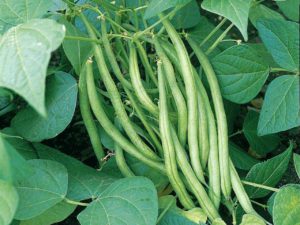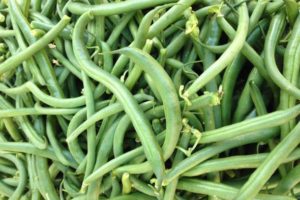Introduction about Beans farming: – Beans belongs to Leguminaceae family and is an important vegetable crop cultivated thro ughout India for its green pod. Beans plant has a climbing habit also. Mainly Indian beans are used in daily vegetable cooking, animal fodder and for soil improvement as well. Green beans are harvested with their beans in a pod before they have had a chance to fully mature. They are more nutritionally comparable to other pod vegetables, being this reason they have very good demand in local markets. This article details about beans and French beans farming in India.
ughout India for its green pod. Beans plant has a climbing habit also. Mainly Indian beans are used in daily vegetable cooking, animal fodder and for soil improvement as well. Green beans are harvested with their beans in a pod before they have had a chance to fully mature. They are more nutritionally comparable to other pod vegetables, being this reason they have very good demand in local markets. This article details about beans and French beans farming in India.
Indian local names for Beans: – Kamal Kakdi (Hindi), Kakkaari (Malayalm), Kakdi (Marathi) Dosakaya (Telugu), Vellarikkai (Tamil).
Commercial verities of Beans cultivated in India: – There are two main categories of beans (1) Hills (2) Plains.
Hills popular varieties of beans are: – Ooty 1, Ooty (FB) 2, YCD 1, Arka Komal (Sel.9), Premier, Arka Sampoorna, Arka Bold, and Arka Karthik.
Plains popular varieties of beans area: – Arka Suvidha, Arka Komal, Premier, (Sel.9), Arka Samrudhi, Arka Anoop and Arka Suman.
Other Varieties of Beans are: – Deepali, Kankan Bushan, Dasara, Phule Gauri.
Climatic condition required for Beans farming: – Common Indian beans grow within a range of temperatures of 17.5-27ᵒC requires cold climatic condition. Temperature above 30ᵒC may cause the bean flower buds to fall and in temperatures above 35ᵒC, been seeds might not form. Apart from this, beans are very sensitive to night frost.
French Beans thrives within the ideal temperature range of 20-25ᵒC, but can be grown in temperatures ranging between 14 and 32ᵒC. High temperatures will cause the poor flower development and poor pods. However, French beans mature faster in warmer climatic areas.
Suitable soil for Beans farming: – Beans can be grown in wide range of soils. Indian bean thrives best in loamy, silty loam and clay loam soils. It is necessary to have well drainage of soil. Soil of ph range 5.5-6.0 with cool climatic condition is suited for beans farming. It is better to have organic matter in soil for better yield. Adding Farm Yard Manure (FMY) or any other compost can make the soil rich.
Soil preparation is Beans farming: – The main field of beans should be prepared thoroughly by giving 4 to 6 ploughings, adding organic matter in the field while preparing the field is important for higher yields.
Best season, seed rate and seed treatment in Beans Farming: – The seed may be sown on ridges or in rows by dibbling or drilling. Ridges and flat bed and furrow layout is used. Spacing in sowing is 1m X 1m or 90cm X 90cm.
Manure and fertilizers in Beans farming: – Apply Farm Yard Manure (FYM) 25 tons/ha each of NPK as basal 90 kg and 45 kg each of NPK is applied as top dressing on 20 days after sowing.
Irrigation/Water supply in Beans farming: – Drip irrigation is most effective method for beans farming. Irrigation is done immediately right after sowing the seed, again on 3rd or 4th day and after once in a week is needed. Again Indian bean is commonly cultivated as rained crop, if it is rainy season, irrigation should not be given and make sure the soil has good drainage.
Weed control operations in Beans farming: – 3 to 9 weeding are requiring for control of weeds in beans plantation. Apply insecticides and fungicides from the time to time manner to control of diseases and pests.
Pests and diseases in Beans farming: – Main peats in bean farming are: –
1. Leaf hopper
2. Aphids
3. Glasshouse whitefly.
• Pod borer can be controlled by spraying Carbaryl 50 WP 2 g/lit.
• Leaf hopper can be controlled by spraying Methyl demeton 25 EC or Dimethoate 30 EC at 2 ml/lit.
Main diseases in beans farming area: –
1. Powdery Mildew: – Powdery mildew can be controlled spraying Wet table sulphur at 2 g/lit or dust with Sulphur 25 kg/ha.
2. Mosaic: – To control this remove the affected plants and spray with systemic insecticides to control insect vectors.
3. Rust: – This disease can be controlled by dusting with sulphur @ 25 kg/ha.
4. Anthracnose: – To control this disease, remove the affected plants and pods and apply with Mancozeb 2 g/lit.
Harvesting and Yield of Beans: – The Indian bean will be ready for harvesting after 2 to 3 months of sowing. Full grown beans are harvested according to the need. The average yield is 100-200 quintal of green pods hectare can be expected.
Beans
Copyright © 2025
